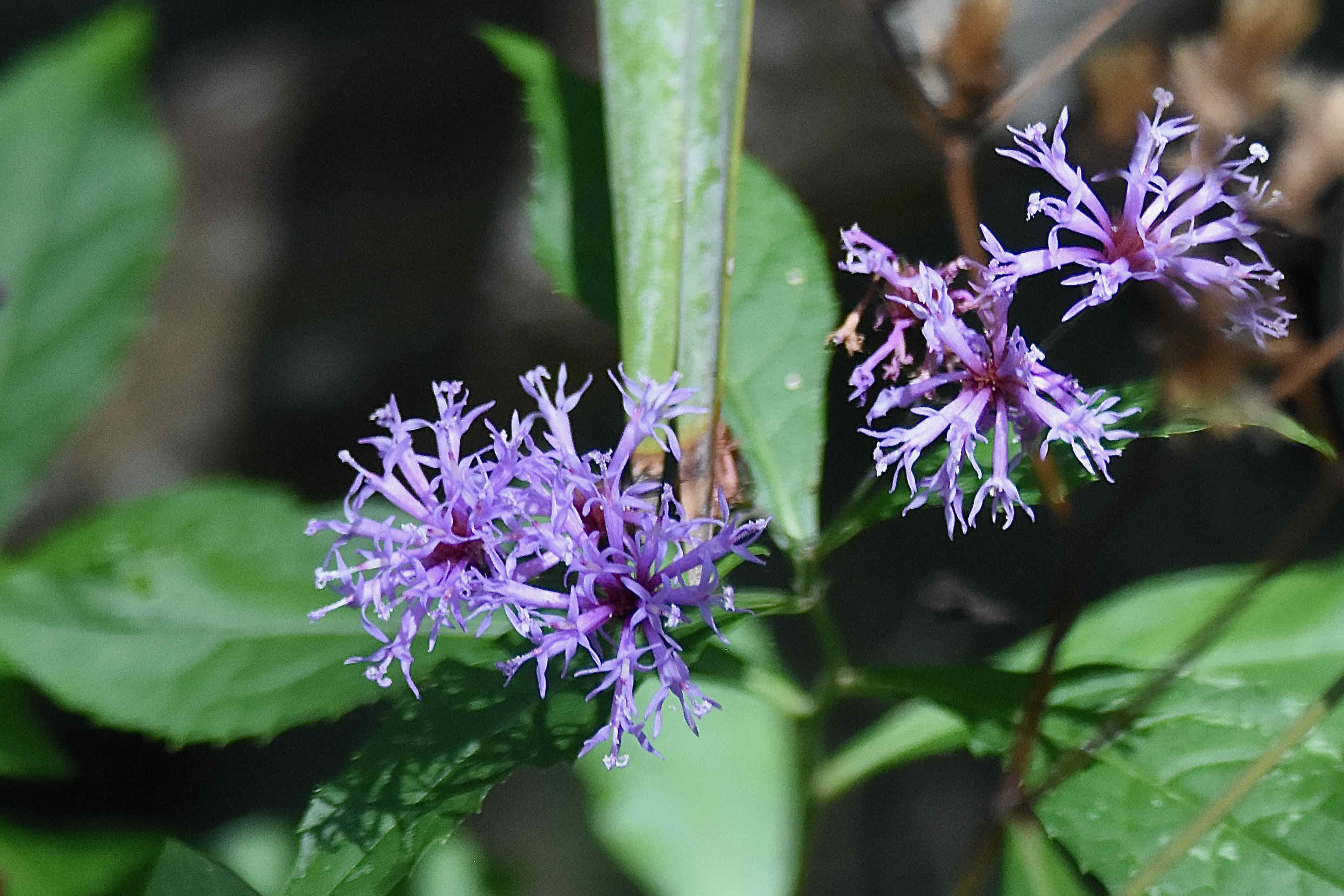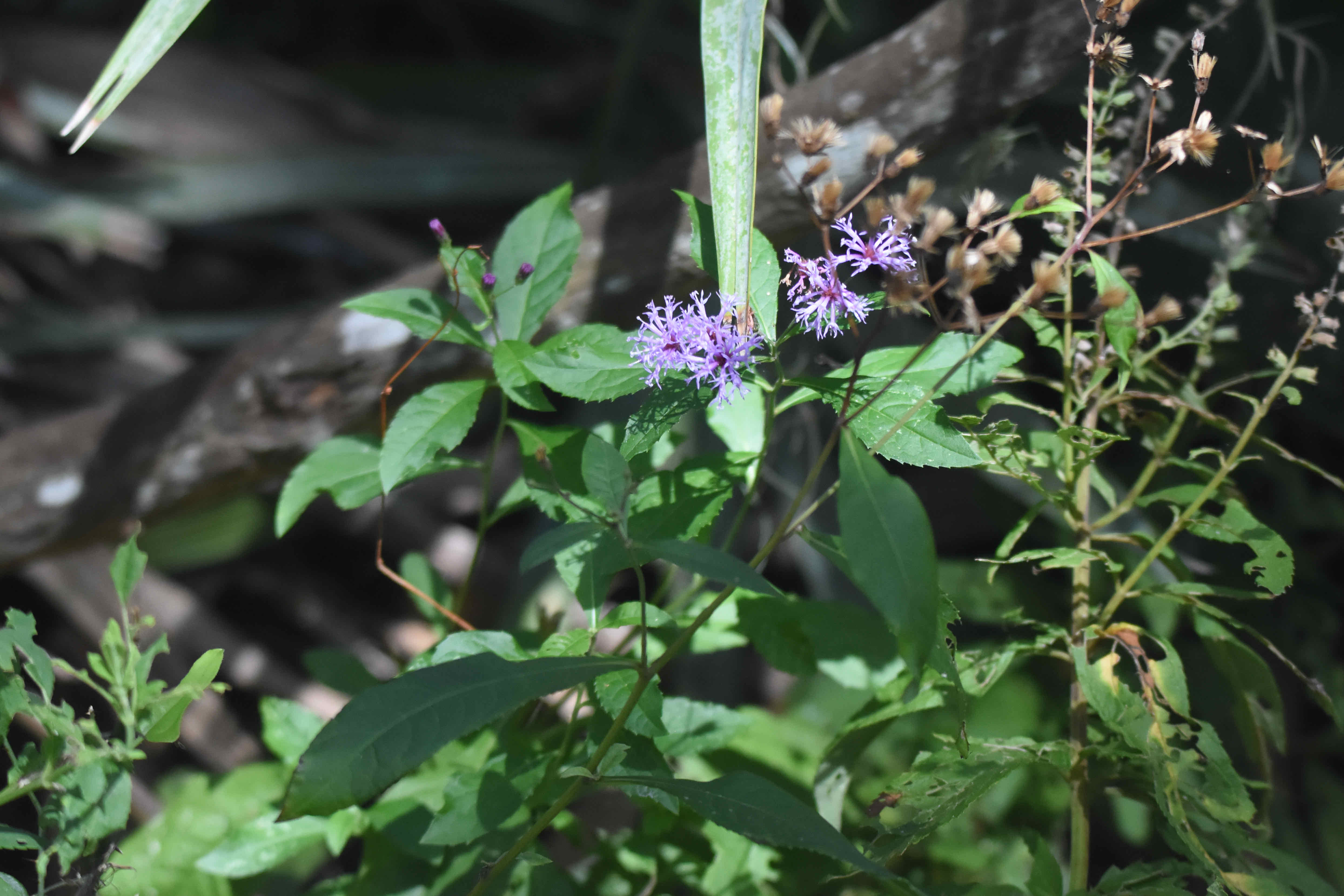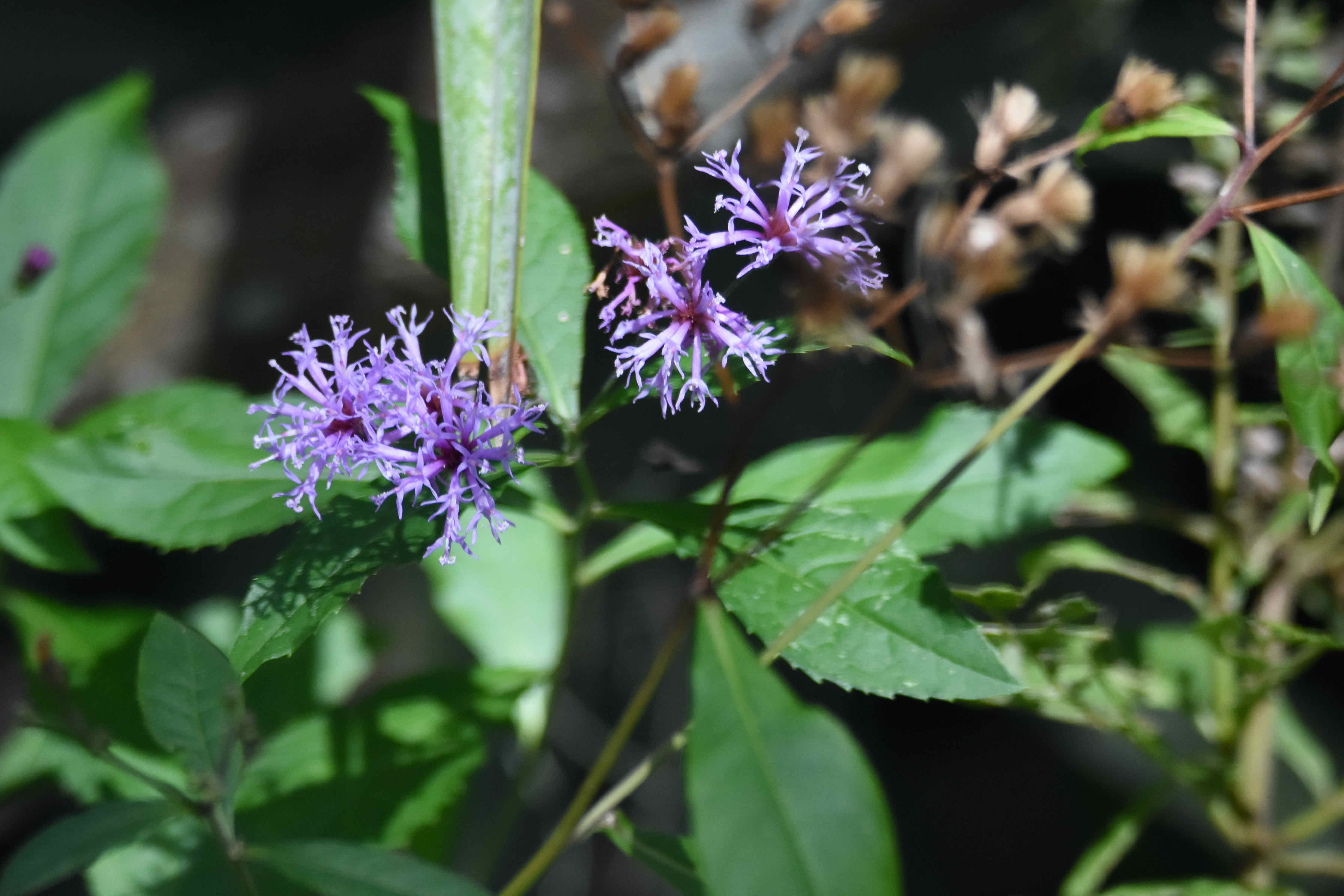
Giant ironweed, photographed at Guana Tolomato Matanzas National Estuarine Research Reserve, Pont Vedra Beach, St. Johns County, in October 2018.
Those delicate-looking purple flowers might give you the wrong impression about the toughness of this plant. The name, however, should set you straight. This is ironweed. Giant ironweed, Vernonia gigantea, and it lives up to the name.
It’s a rare plant within the bounds of South Florida, found only in Martin and Lee counties, and within those counties, it’s found in only a half dozen parks and preserves, according to the Institute for Regional Conservation. The IRC considers it critically imperiled regionally.
Giant ironweed is found throughout most of Florida’s central Peninsula and into the Panhandle, where it’s more commonly seen. Its range extends through most of the eastern and central United States as far north as Pennsylvania and Michigan, sneaking across the border into Ontario. It’s found as far west as Nebraska and Texas. It’s most abundant in the Mississippi and Ohio river valleys.
Giant ironweed is a perennial, flowering summer into fall, peaking in July, going dormant during winter, even in Florida.
It is a perennial, standing three to five feet tall. In the spring, when it awakens, it’s a mass of basal leaves, eventually sending out a stalk. The basal leaves are course and oval in shape; the stem leaves are oval to elliptical, dark green above, whitish underneath, up to eight inches long, serrated along the edges and arranged alternately. What looks to our eyes as a single flower is actually a flower head made of 15 to 25 small, individual tube-like flowers. Each flower is fused at the base, but flares outward at the top.
Giant ironweed is highly adaptable, taking to sites with full sun or mostly shade. Its preferred habitats are moist places that can be inundated at times, like wet pine flatwoods, along stream banks or other bodies of fresh water. It’s often found in pastures; grazing cattle won’t touch the stuff, so there’s nothing to keep it in check and it can become something of an agricultural pest.
It can tolerate a degree of dryness but not total drought. It is not salt tolerant.
The genus name honors English botanist William Vernon, who studied plants in the United States. We’ve seen varying numbers on how many members of the species native to the eastern U.S., ranging from seven to as many as 18. There are about 1,000 members worldwide. One other native variety found in our end of the state is called Florida ironweed, Vernonia blodgettii. The genus is known for its tough stems.
There’s also a nonnative plant found here called little ironweed, Cyanthillium cinereum, but it’s not closely related.
Giant ironweed isn’t commonly propagated and sold by the state’s commercial nurseries, but seeds can be found and grown in parts of the garden with moist soil. It can become weedy, however.
The root of giant ironweed has been used in traditional medicine to break fevers and as a tonic and blood purifier for women during their menstrual cycle and during pregnancy. Other members of the Vernonia genus have been used to treat stomach ailments and other problems, but little research has been done of the effectiveness of our guy.
Giant ironweed is a member of Asteraceae, the sunflower family. It’s also known as tall ironweed.



